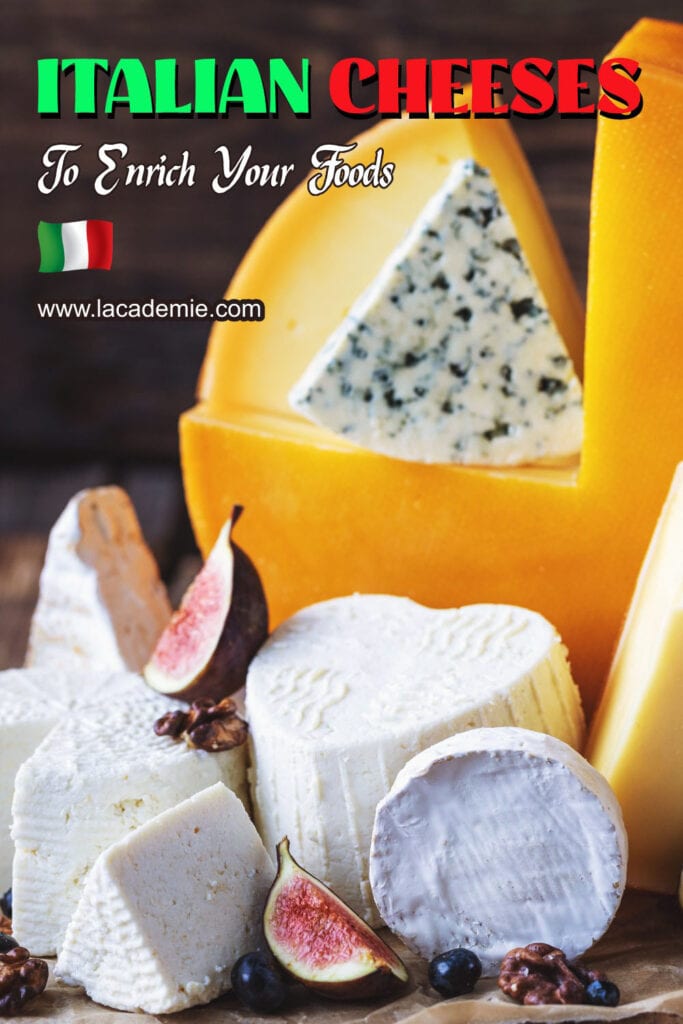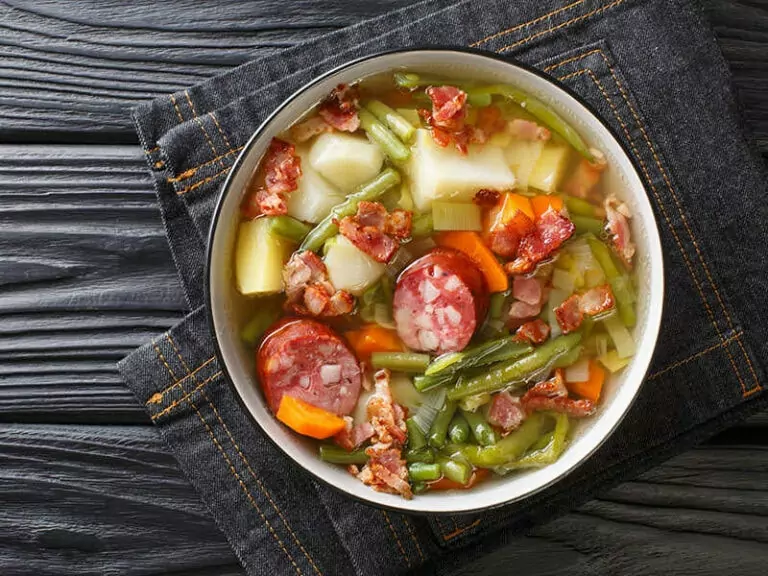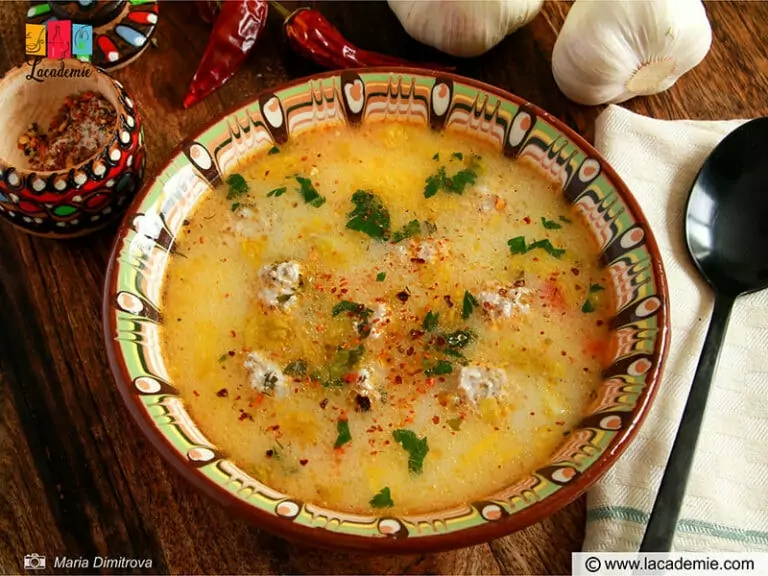Do you remember the last time that you had Italian cheeses? This omnipresent delicacy is around in all kinds of foods, from pasta to pizzas and rich sauces. It will serve you well to enlarge your knowledge of how to channel better this Italian deliciousness into your meals.
Now, try to name some common types of cheese from Italy. Which one have you got? If your answer only revolves around ordinary options like Parmesan and Mozzarella, continue to read this post for more exotic choices. I assure you they are anything but, well, cheesy.
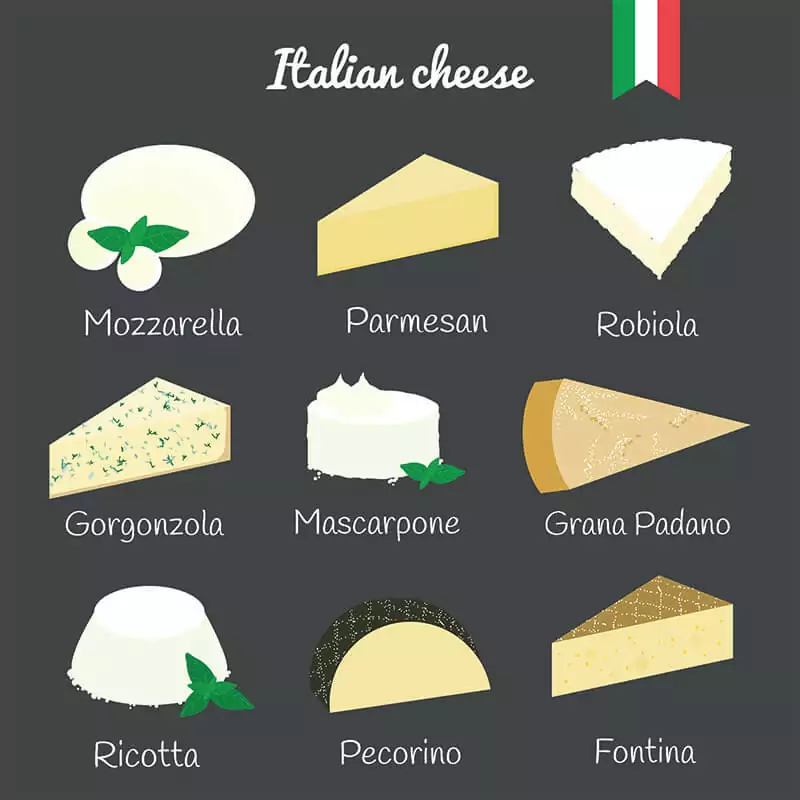
Expand Your Menu With These Inviting Italian Cheese
Cheese is omnipresent in Italy; every corner you turn to may have a cheese shop, and every traditional dish you pick up may contain this food. Some varieties are immensely similar, while others are like chalk and cheese. Keep on reading to find out how.
1. Parmigiano-Reggiano
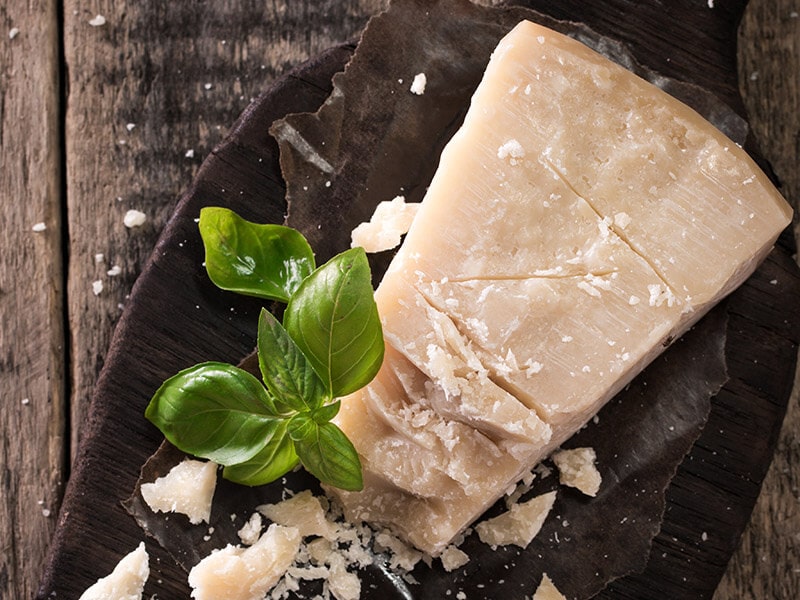
Let’s start with the king of all Italian cheese: the Parmigiano-Reggiano variety. That name translates into English as “Parmesan cheese”, signifying the origin of the cheese in the province of Parma, northern Italy. It is one of the most delicious and expensive cheeses.
In essence, Parmigiano-Reggiano is a straw-colored, hard, and dry cheese made from cow’s milk. But not just any cows; authentic Parmigiano-Reggiano only comes from ones that feed exclusively on grass and hay.
In addition, this premier cheese has to be aged for at least 12 months with natural whey culture and no artificial additive.
Such meticulous preparation results in this cheese possessing an excellent flavor and texture. It boasts a gritty surface that is pleasant to touch and a fruity, nutty, tongue-pleasing taste. You can eat this cheese alone as a healthy snack or grate it and mix with pasta, soups, or rice dishes.
Interestingly, while many people use Parmigiano-Reggiano and Parmesan interchangeably in English, those two types aren’t the same. The former can only be produced in northern Italy and have to meet stringent standards, hence its high price.
Meanwhile, Parmesan utilizes similar ingredients and methods. But it can be produced anywhere, and its flavor isn’t as complex and memorable as that of Parmigiano-Reggiano. In return, Parmesan is much more affordable and readily available.
How do you cut open a 38-kilogram Parmigiano-Reggiano cheese wheel? Find out the answer here.
2. Grana Padano
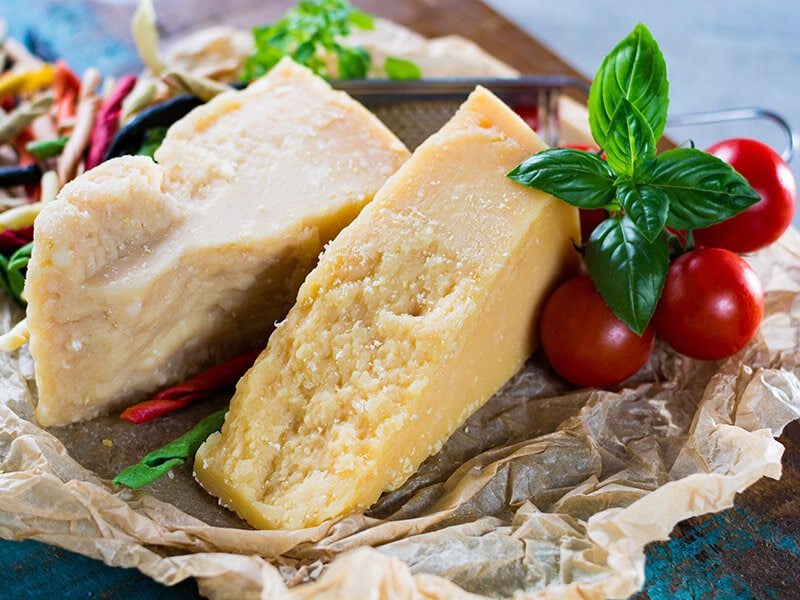
Grana Padano is a jewel in Italy’s many types of hard cheese. It is a specialty from Po Valley in northern Italy, only a short drive away from Parma. Like Parmigiano-Reggiano, Grana Padano is a semi-fat, pale gold hard cow cheese.
However, the likeness between the two stops there. Standard Grana Padano is usually ripened for 9 months and isn’t as strictly regulated. Therefore, although it is pleasantly crumbly in texture and rich, slightly nutty in flavor, it isn’t on par with Parmigiano-Reggiano.
However, commercial Grana Padano can come in different ripening stages, from 9 up to over 20 months. These varieties possess a fuller-bodied flavor than regular cheese. You can melt Grana Padano and use it in a host of dishes, such as salads, sauces, and soups.
3. Stracchino
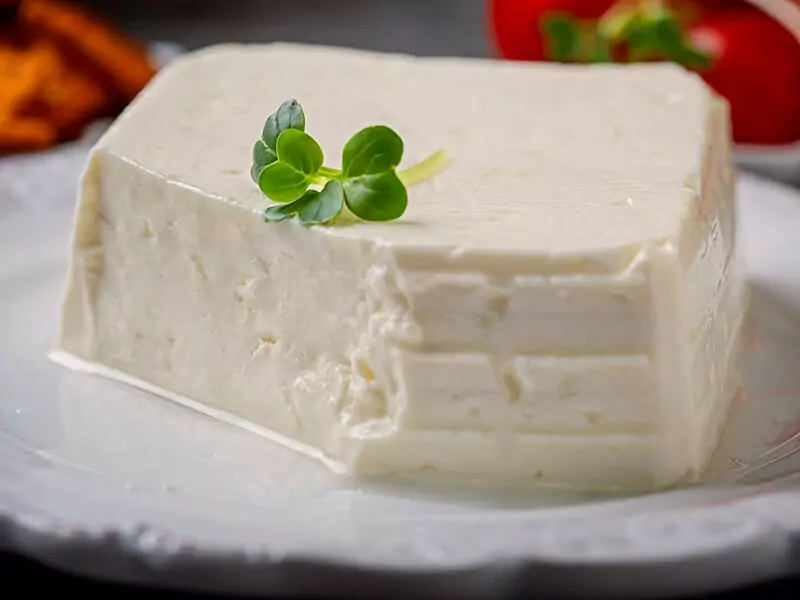
Imagine that you want to enjoy the best of northern Italian cuisine; which dish will you choose? Whatever you want to pick, go for something that contains Stracchino, a creamy, yellowish-white cow cheese native to this region.
Also known as Crescenza, Stracchino is a creamy and butter delight with mildly fruity freshness. It is very soft and usually available in the form of a square block. Rumor has it that the first batches of Stracchino were produced from the milk of tired cows, hence its name.
Due to Stracchino’s softness, this cheese is best used as a paste or paired with fresh fruits and meat. It is also a common ingredient to enrich the region’s famous breads, such as Focaccia and Piadina. Don’t forget that Stracchino is highly perishable and must be savored quickly.
4. Robiola
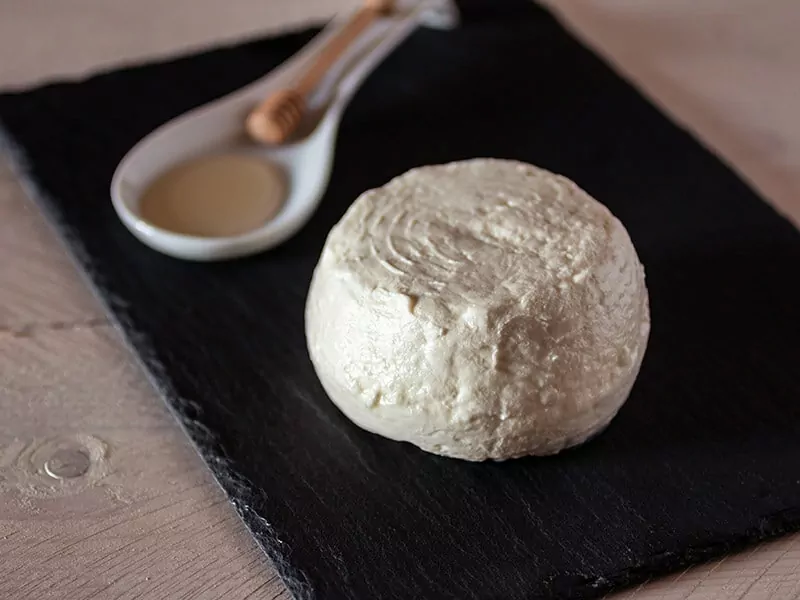
Robiola is a sub-variety of the Stracchino family. In its old form, this soft-ripened cheese acquires a reddish rind, giving birth to its name, which is derived from the word rubeole (“ruddy”). But another theory says that the cheese is named after the town of Robbio in Pavia Province.
This cheese is soft and highly spreadable, making it perfect for many Italian appetizers as well as main dishes. Due to sharing similarities with Stracchino, you can expect it to have a sweet and nutty taste.
When it is aged, however, the cheese will become intensely tangy and even spicy with mushroomy notes. Its smell isn’t very intoxicating, though still enough to make your nose wrinkle. Meanwhile, fresh Robiola can have a faint milky aroma.
5. Mozzarella
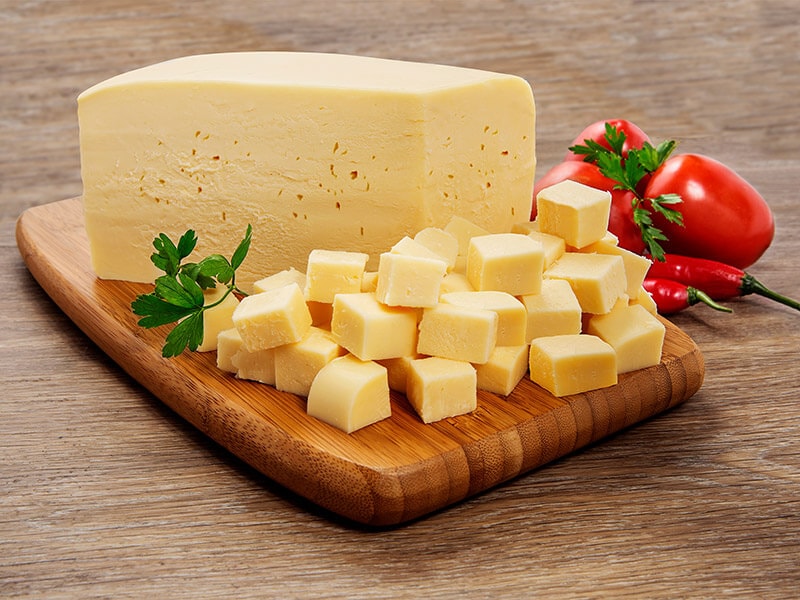
After Parmesan, Mozzarella is probably the most commonly used type of white cheese in your arsenal of good foods. Traditionally, this cheese is based on water buffalo’s milk which is more nutritious than cow’s. However, most modern Mozzarella varieties come from cow’s milk.
By definition, Mozzarella is a semi-soft cheese with a higher moisture content than other types of cheese. This trait results in shorter shelf life for fresh Mozzarella, ranging from several days to a week after opening. However, low-moisture Mozzarella can last longer than that.
The typical color of Mozzarella is white, but it can also turn yellow. This cheese can charm you with its soft yet elastic texture, milky aroma, and a delicate flavor mingled with a slight sourness. If you can enjoy water buffalo Mozzarella, the rich taste will be even more pronounced.
The standard time to age Mozzarella is between two and four weeks. The more you ripen the cheese beyond that mark, the softer and tangier it will become. You can cook this southern Italian delicacy in many ways, like infusing it with pizza, spreading over a cracker or a salad.
Discover how Italians create Mozzarella from water buffalo’s milk here.
6. Scamorza
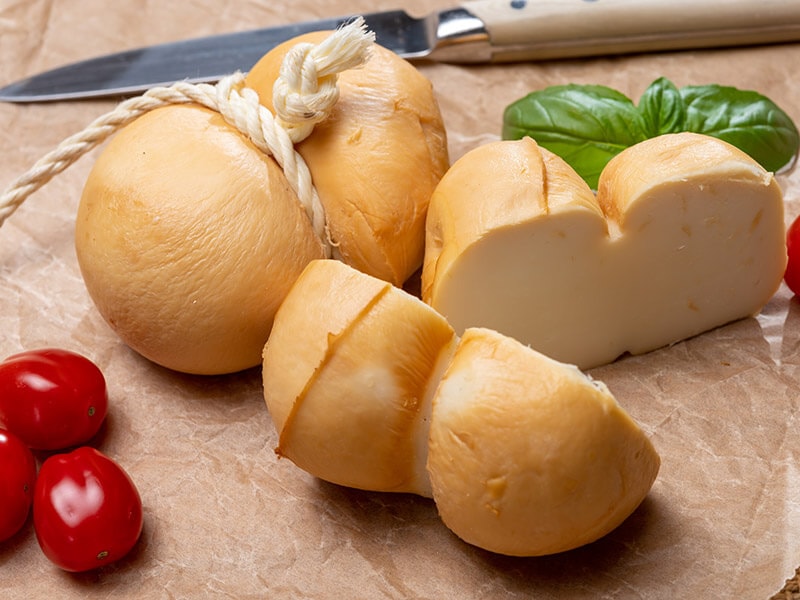
If you’re looking for an eye-catching Italian cheese, how about Scamorza? It has the peculiar shape of two balls connected in between. Cheesemakers create this beauty by forming the cheese into a round shape before “strangling” it with a rope and hanging it to dry.
Scamorza is a semi-hard cheese that has a delicate, creamy sweetness with sour notes. Its flavor is like a more robust version of Mozzarella. Therefore, when you want to spice up your Mozzarella-based dishes, replacing that cheese with Scamorza is a wise choice.
In its fresh form, Scamorza has a snowy appearance. But there is an almond-colored variant called Scamorza Affumicata that is smoked over flaming straws or beechwood. Both types can be found all over Italy, especially in the southern region.
7. Ricotta
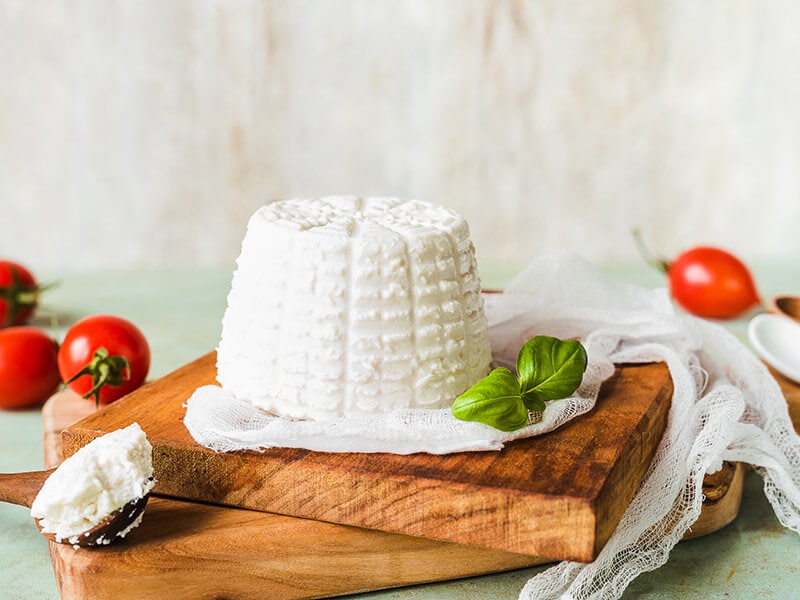
Ricotta falls under the category of whey cheese. Its main ingredient is whey, the protein-rich liquid by-product of cheese production. As such, it is dissimilar to regular cheese that is made directly from milk. However, listing the best Italian cheeses without Ricotta is a serious mistake.
Many people love Ricotta for its pearly white appearance, delightful freshness, grainy texture, and subtle sweet taste. Ricotta can be derived from various kinds of milk such as cow’s, goat’s, or sheep’s, each of which will give the cheese a distinct flavor.
While most types of cheese come with a famously intense smell, Ricotta is almost odorless. Even if you are a super smeller, the only scent you can detect from high-quality is a light milky aroma. Therefore, this cheese is perfect for whipping up desserts, pasta, and other dishes.
8. Burrata
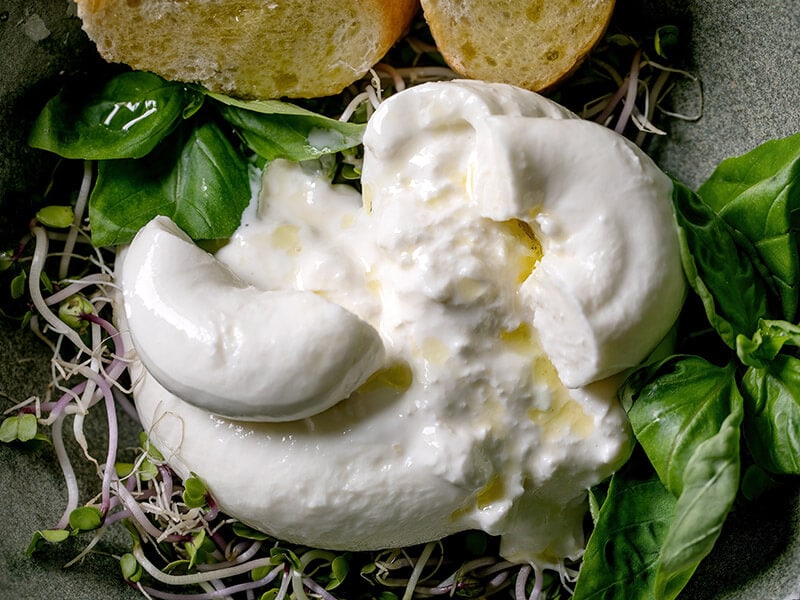
From Apulia in southeastern Italy comes one of the most delicious types of soft cheese to enjoy in the country. Burrata was created in the early or mid-20th century, so it is relatively young compared to other cheeses. But it is as prevalent as any long-established name.
Literally “buttery” in Italian, Burrata naturally has an intensely nutty flavor mingled with a delicate sweetness. The cheese enjoys such deliciousness from cow’s milk, cream, and rennet. Rennet is a set of enzymes made from the stomach of a baby cow, goat, or sheep.
The only downside of this smooth and white Burrata is its abysmal shelf life: it loses its distinct taste after two to five days. So you should enjoy this cheese as fresh as possible. Season it with tangy tomatoes and olive oil or use it as a topping for pizza and grilled bread.
Let’s go to Apulia, the birthplace of Burrata, and observe how locals make this cheese.
9. Fortina
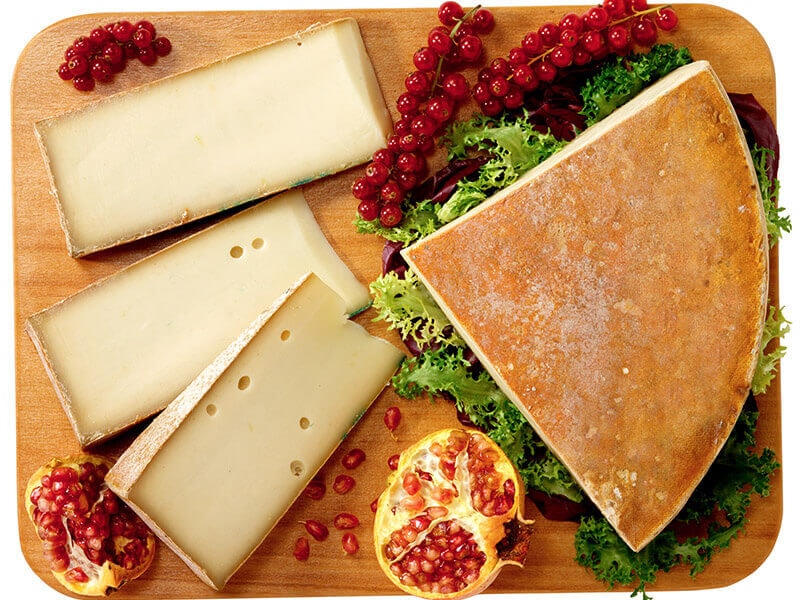
This one is a much-appreciated contribution from the mountainous Aosta Valley region in northwestern Italy. Fortina can range from semi-soft to hard in firmness, depending on how long it is ripened. Young Fortina tends to be more moist and tender than the old one.
The flavor of this cheese also changes with time. Aged Fortina boasts a wonderfully rich and savory taste blended with a medium-sharp bite. Encasing this mine of favor is the smooth and pale golden texture that is pleasant to touch and bite.
In addition to Italy, Fortina is also popular in France, America, Scandinavia, and some Latin American countries. But the Italian version tends to be more potent than what is sold abroad. You can enjoy this cheese with roast meat, sauces, sandwiches, and pasta.
10. Provolone
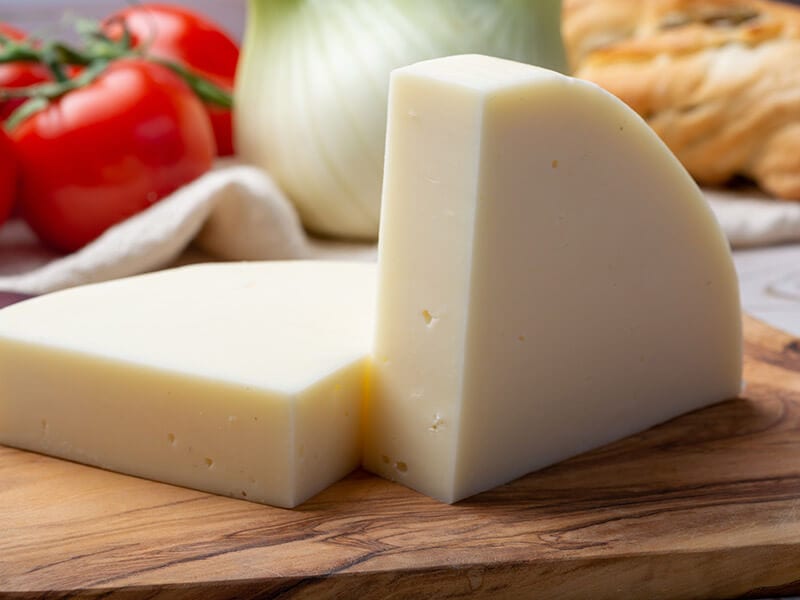
Southern Italy is the land of innumerable sumptuous cheeses. When it comes to local cow cheeses, the choices are endless. One of the most delicious and versatile varieties you can find there is the semi-hard cheese Provolone.
Its flexibility is evident in the diversity of shapes: whether you like a pear-, sausage-, or cone-shaped Provolone, your favorite cheese is always around. This cheese can also go into plenty of dishes: sandwiches, meat pies, or casseroles, not to mention pizza and pasta.
Provolone can assume different flavors according to its aging time. Young, pale white ‘Provolone Dolce’ that is aged for about four months is sweet and a little tangy. By contrast, three-year-old yellow ‘Provolone Piccante’ is considerably creamier, nuttier, and sourer.
Here is a glimpse into how Provolone is made.
11. Mascarpone
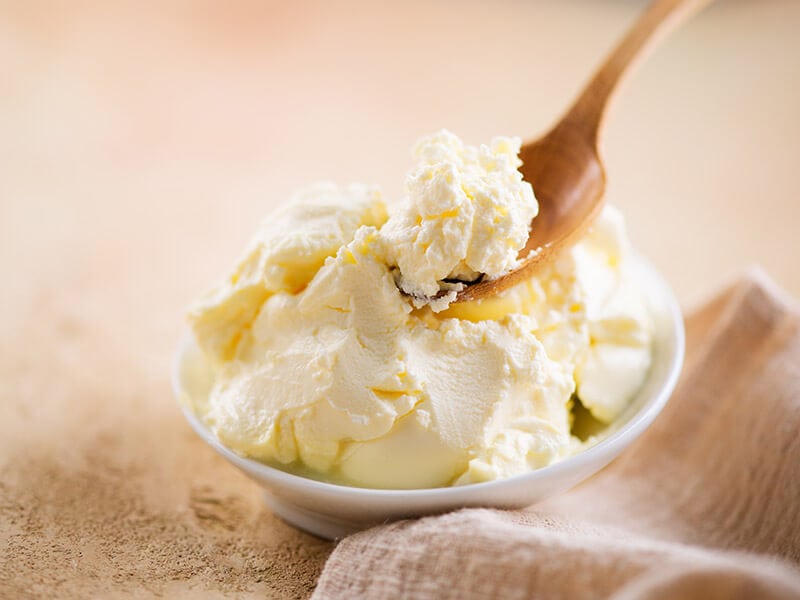
The world of Italian cheeses can’t be complete without its mouth-watering types of cream cheese. There are many varieties to be picky about in Italy. The yummiest of them is probably Mascarpone with an astonishing fat content of 60% to 75%, from Lombardy with love.
As a cream cheese, Mascarpone smells like a hunger-provoking blend of milk and cream without any stinky odor. It is highly smooth, soft-textured, and spreadable. While this cheese is already sweet and savory, people usually mix it with lemon juice, cacao, and coffee to diversify the taste.
When you want your dishes or desserts to leave a richer mouth-feel, don’t hesitate to replace whipped or heavy cream with Mascarpone. Otherwise, this cream cheese is decadent enough on its own as well as paired with toasts, roast fish and meat, or fresh veggies.
12. Taleggio Cheese
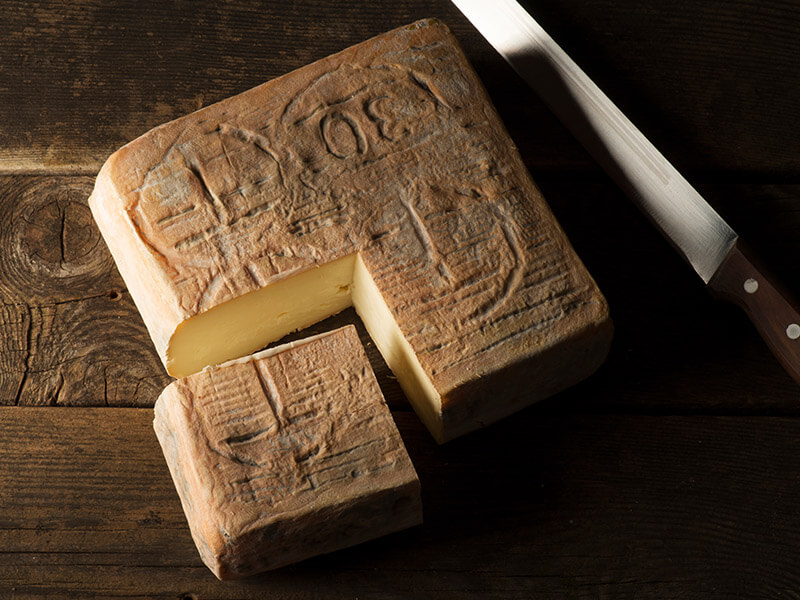
A few centuries are long for men, but they mean nothing to traditional Italian cheeses. This delicacy from the Val Taleggio valley in Lombardy has survived such a test of time. Early Roman historians sang the praises of this cheese two thousands years ago, and modern foodies still do.
People tend to smell Taleggio cheese before seeing it. Its indelibly pungent aroma, which gets stronger with time, is a signature trait of this Italian specialty. In fact, most lists of the world’s stinkiest cheeses usually conclude with Taleggio.
When you get past this powerful aroma, you will discover Taleggio cheese to have a soft and creamy texture mingled with a surprisingly mild flavor. It can range from pink to greenish-gray on the outside and tends to be milky white on the inside.
Grated Taleggio cheese will add a pleasant tang to your salad, rice dishes, and baked pasta. If you’re worried about the smell, the commercial version of this cheese usually has a more moderate aroma.
13. Asiago Cheese
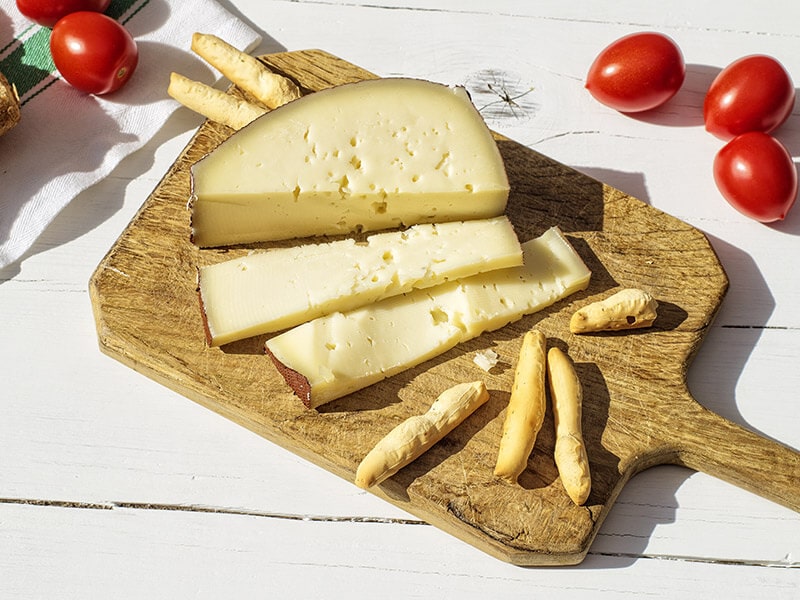
Asiago cheese doesn’t enjoy an awe-inspiring ancestry like its Taleggio counterpart, but its history is old enough to dwarf countless dishes. Its current form probably appeared after the 15th century in the Asiago area (northeastern Italy) when local dairy cattle raising flourished.
By definition, Asiago cheese is a hard, crumbly cheese derived from cow’s milk. It has a pale yellow or white color, a thin rind, and a spongy texture. Behind this ordinary is a richly sweet and tangy deliciousness that will make your heart skip a beat.
Like other varieties, Asiago cheese acquires a darker color, a rougher texture, and a more vigorous taste with age. But whether it is old or young, this cheese is excellent for all kinds of salads, soups, sauces, and sandwiches.
Additionally, people also use Asiago to make a tasty bagel variety of the same name. Traditionally, the cooks will top the bagels with Asiago cheese to add a unique flavor. This dish was invented in the 1990s.
Dive into this detailed description of what aged Asiago cheese tastes like.
14. Caprino
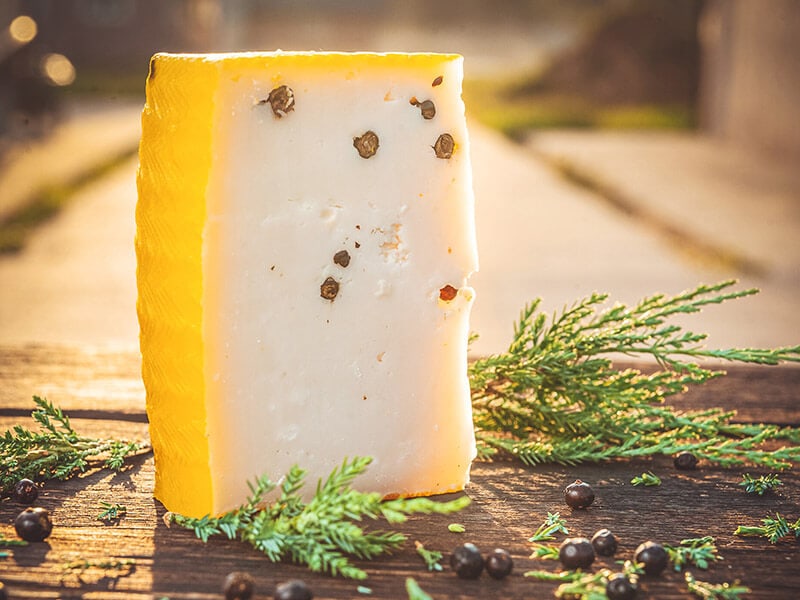
When you’re tired of the run-of-the-mill cow cheese and want to try exotic types of goat cheese, make sure Caprino is on the list. The name is derived directly from the Italian word for goat “capra”. This cheese has plenty of variants found in many regions throughout Italy.
Generally, there are two categories of Caprino: fresh and aged. Fresh Caprino is milky white, tender-textured, creamy, and subtly sweet in flavor. By contrast, aged Caprino is firmer, much saltier, and available in a light yellow or even pale pink color.
The cause of such differences is the time people ripen the cheese. Fresh Caprino is matured from two to four days, while it takes up to six months to produce aged Caprino. As for regional variants, locals sometimes mix cow’s milk, rennet, or other additives to enrich its flavor.
15. Montasio
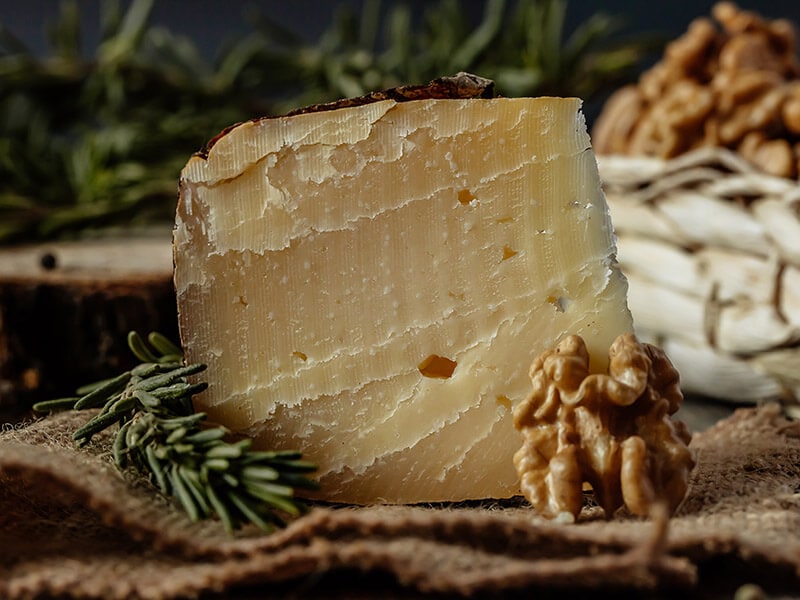
How is mountain cheese different from the rest? Let’s find out the answer with Montasio, a delicacy from the upland Friuli-Venezia Giulia and Veneto regions in northern Italy. The fresh air of the Italian Alps manifests itself in the rich, reinvigorating taste of this outlandish cheese.
By some accounts, a Benedictine abbey in those regions is responsible for creating this straw-colored cheese around the 13th century. With its fruity, full-bodied flavor and aroma suggestive of herbs, Montasio has sheltered countless Italians from the alpine winter ever since.
There are many ways to serve this cow cheese. Eating it with crisp bread is one thing while mixing it with pasta, sauces, or fruits is equally pleasant. Montasio works well for both appetizers and after-meal snacks.
Do you want to learn riveting recipes with Montasio? If so, check out this tutorial.
16. Pecorino Romano
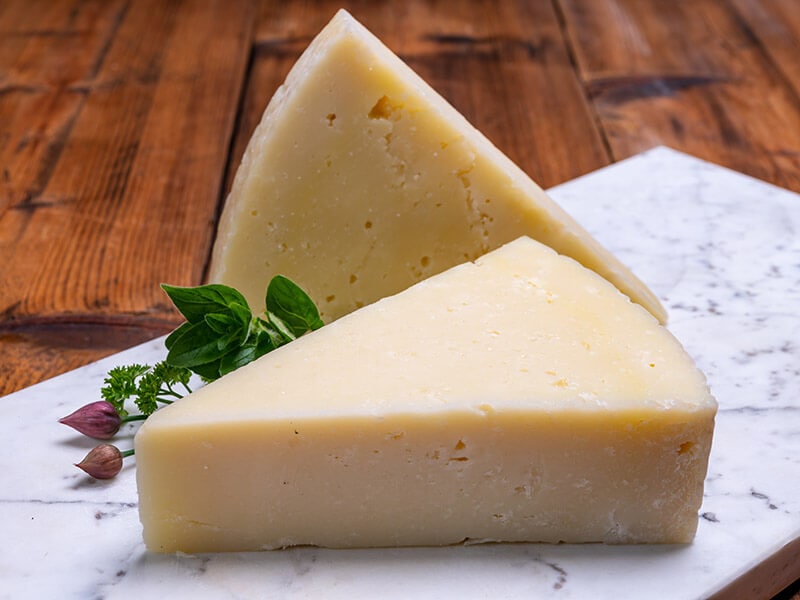
Pecorino is a generic term for Italian cheese based on sheep’s milk. Since sheep is one of Italy’s dominant livestock, Pecorino earns an influential position in Italian cuisine. Pecorino Romano is the tastiest and most ancient of its kind, dating back to ancient Roman times.
In essence, Pecorino Romano is a hard salted cheese. It has the same white or pale yellow color and a sharp smell as top-tier Parmesan. Its texture is similarly firm, dry, and crumbly, perfect to pair with fresh bread, cold cuts, pizzas, or soups in place of Parmesan.
When your eyes and nose can’t tell the differences between the two cheeses, your tongue will show you that Pecorino Romano is endowed with a grassier and earthlier taste. The inclusion of robust sheep’s milk is one reason for this superiority. Its large amount of sodium is another.
17. Gorgonzola
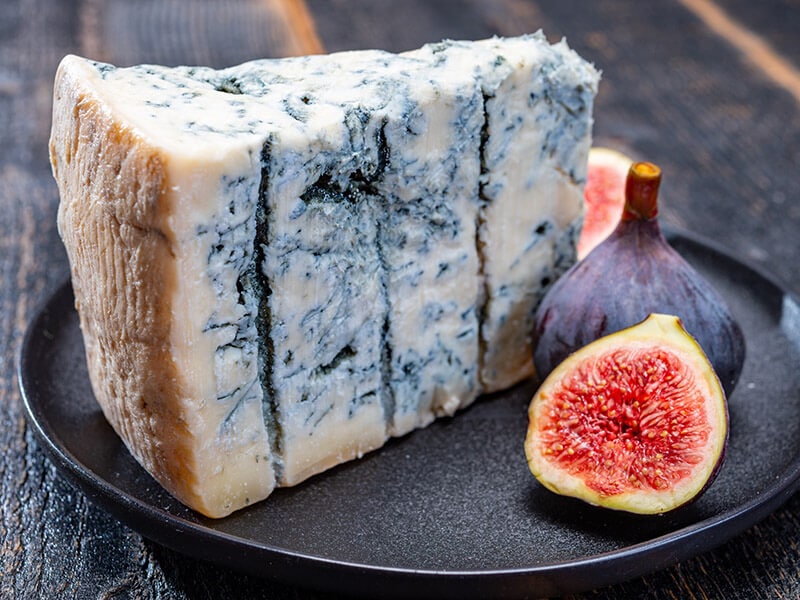
Once you’re fed up with the ubiquitous white and yellow cheese, try new types of blue cheese to add more color to your menu. In case you don’t know what to look for, I recommend Gorgonzola, a visually appealing cheese named after a town in Lombardy.
Gorgonzola easily attracts attention due to its pretty golden appearance that is veined with distinct blue-green mold. While it is pungent, piquant, creamy, and buttery in flavor, its flavor is more delicate than other varieties of blue cheese. It is something you have to feel, not taste.
The longer Gorgonzola is aged, the tougher in texture and shaper in taste it will get. The aging time creates two types of cheese: sweet Gorgonzola (dolce) aged for twoto three months and spicy Gorgonzola (piccante) ripened for much longer.
Here is a behind-the-scenes look into how Italians produce Gorgonzola.
18. Bel Paese
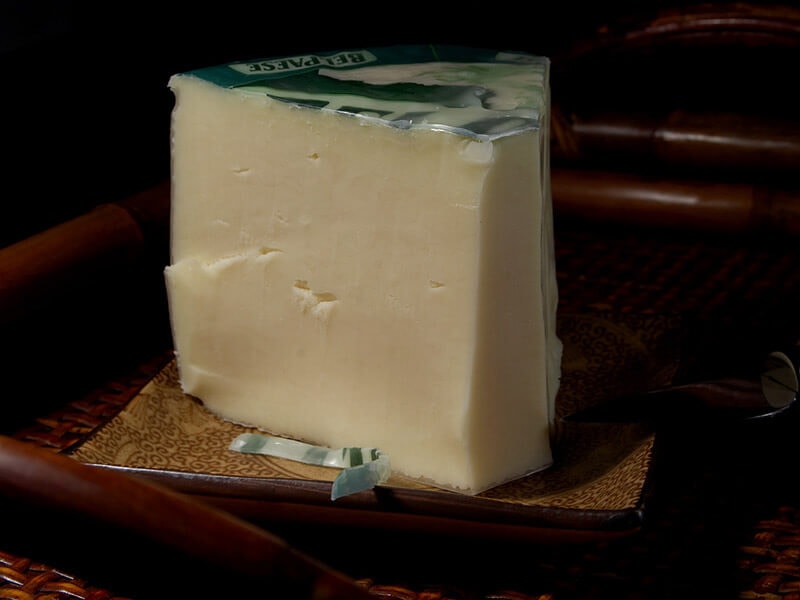
Bel Paese, literally “beautiful country” in Italian, is one of the nicknames of the boot-shaped land. But it also refers to a fantastic Lombardy-originated cow cheese that you shouldn’t miss. Since its creation in 1906, the cheese has become a common sight in Italian cuisine.
Usually available in a lemony yellow color, Bel Paese is as mild, sweet, and nutty as Italian sunshine itself. This semi-soft cheese takes about 6 to 8 weeks to ripen and can bring out the best flavor in fresh fruits and fine Italian wines. Mixing it with pasta and pizza is also a must.
19. Squacquerone
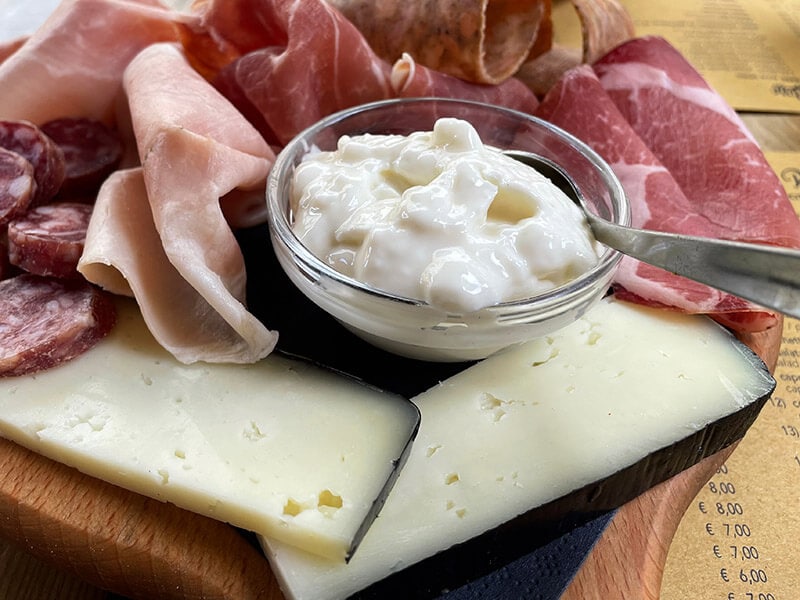
When you take a food tour of the Emilia-Romagna region, don’t miss one of the best Italian breads that it offers: Piadina. This flatbread sandwich is amazingly finger-licking, especially when stuffed with the local cheese Squacquerone.
This cow cheese is soft and moist, as indicated by its name, which stems from the word squaglia (“melts”). Behind the milky-white, crumbly appearance is a pleasantly sweet and sour taste that goes perfectly with the grainy flavor of breads, creating a pleasing combo.
This cheese enjoys the Protected Designation of Origin (PDO) status under the full name of Squacquerone di Romagna. This EU-granted distinction means that only Squacquerone produced in the Emilia-Romagna region is authentic.
20. Castelmagno
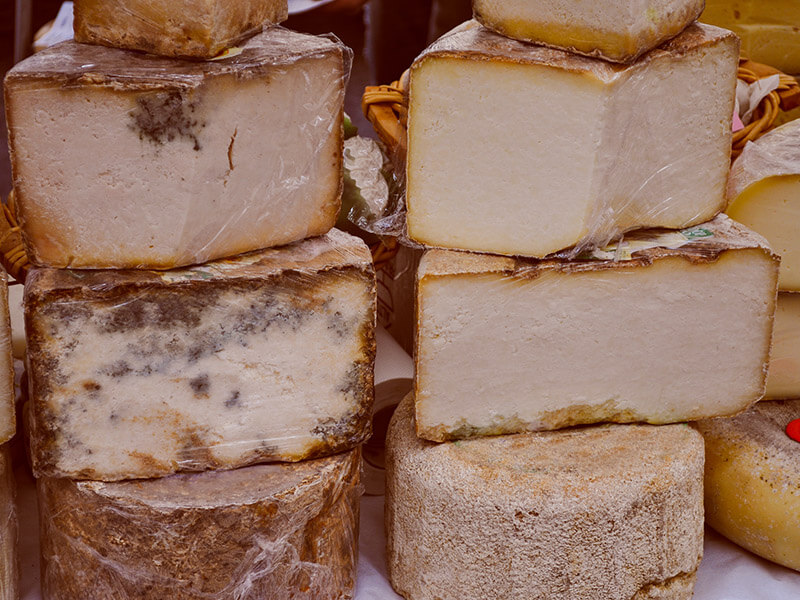
In gastronomic terms, the Piedmont region in north-west Italy is world-renowned for its wines and truffles. But it won’t do if you forget about another culinary delight that this land can offer: its ancient Castelmagno cheese first recorded in 1277.
This semi-hard cow cheese possesses a round shape with flat faces. It can take between two months and two years to ripen fully, a process that can change its originally white color into a brownish, wrinkled appearance.
Likewise, its flavor gets more potent with time, switching from a delicate taste to a spicy and tangy bite. Castelmagno can complement various Italian foods such as Polenta (boiled cornmeal) or carpaccio (sliced raw beef meat). Plain rice and pasta are also acceptable.
21. Puzzone di Moena
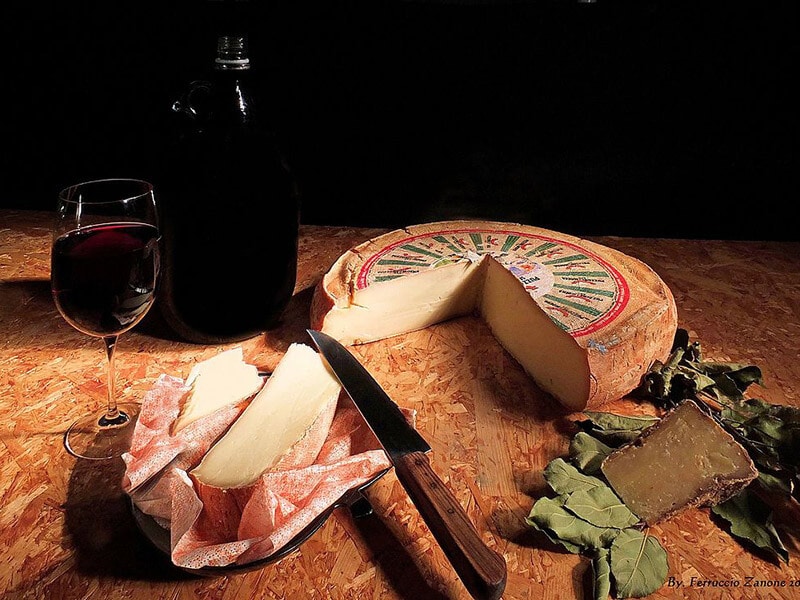
Puzzone di Moena is a rather smelly DOP-certified cheese.
Here is another mountain cheese from Italy. Puzzone di Moena is a savory cheese variety found in the Moena area in the Trentino-Alto Adige. It is derived from pasteurized cow’s milk and aged from three to ten months at high altitudes, thus creating a wild, untamed freshness.
There are a few ways to interpret the name Puzzone, but the most common meaning is “smelly”. In fact, many people describe the aroma of Puzzone di Moena as fermented herbs with hints of ammonia.
But once you get past that hassle, you can appreciate its robust and spicy flavor. When your tongue washes down a piece of that elastic, yellow to reddish cheese, it will leave a rich, tingly mouth-feel. The sensation is always there whether you eat it alone or pair with other foods.
Discover everything you want to know about Puzzone di Moena here.
22. Bitto
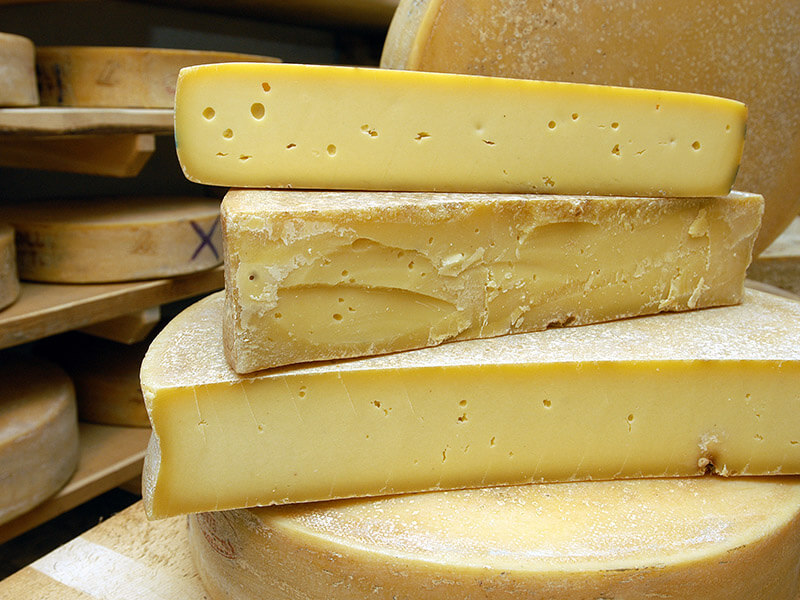
Being a DOP-certified food grants Bitto cheese different boons and burdens. On the downside, this cow cheese can only be produced in pastures around the Valtellina valley in the Lombardy region. Also, it is only available in summer when the cows can feed on high alpine meadows.
In return, Bitto is one of the most renowned Lombard cheese varieties. Initially soft and white, it can turn yellowish and crumbly in texture as well as more piquant in flavor. If mixed with 10 to 20% of goat’s milk, this cheese can be aged for up to 10 years, imparting a memorable taste.
When you pick up a piece of aged Bitto, it’s not difficult to detect a scent of herbs and flowers from the vast Italian mountainous meadows. Besides appearing in many local dishes, Bitto can be enjoyed with fruits, balsamic vinegar, or red wine for an elegant experience.
Expand Your Menu With These 4 Fantastic Italian Cheese Recipes
Improving your cooking with Italian cheese isn’t difficult, but it takes some practice. In this section, allow me to introduce several common recipes that will help you harness the awesome richness that those fatty Italian delicacies possess.
Italian Three-Cheese Macaroni
Everybody can cook Macaroni with cheese, but how about a three-cheese dish? This recipe triples the deliciousness of your ordinary pasta by combining Parmesan with Mozzarella and cheddar cheese. Whip it up and behold how the power of three will set you free.
Risotto
Risotto is a creamy Italian recipe that cooks rice in a meat- or veggie-derived broth. It is a staple dish of the Parmigiano-Reggiano region, so the inclusion of premium Parmesan is a must. Try this one out if you want to see how well that cheese goes with white rice.
Overcome the challenge of cooking Risotto with this guide.
Frico
This cheese pancake is usually known as Frico Friulano since it comes from the Friuli-Venezia Giulia in northeastern Italy. While this appetizer has no eggs, it makes up for that deficiency with creamy Montasio. A combo of Frico and salad can give any party a healthy start.
Spaghetti Cacio e Pepe
Let’s conclude with this timeless classic: spaghetti with cheese and pepper. How a simple mix of olive oil, minced garlic, ground pepper, and Pecorino Romano can make plain spaghetti so addictive is a mystery. But who cares?
Are You Ready To Cut The Italian Cheese?
By and large, there are over 2500 cheese varieties throughout Italy. No matter how vast your knowledge of Italian cheese is, you will never comprehend all of them. But why do you have to? Learning about the best Italian cheese is enough to give your meals a lifetime of flavors.
I hope that you’ve gained more options besides the ordinary Parmesan and the like by now. While cow cheese accounts for the majority, you can try varieties derived from goat’s or sheep’s milk, like Caprino and Pecorino Romano. You will be surprised by how un-cheesy they are.
Do you find this post useful? If so, that’s the cheese! Don’t forget to share it with your friends. The comment section is open to anything you care to share. Many thanks and see you soon!
